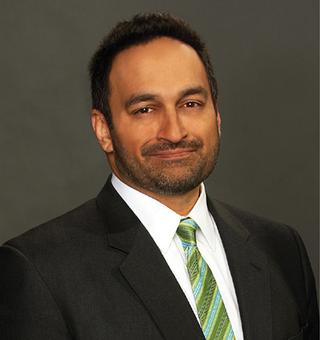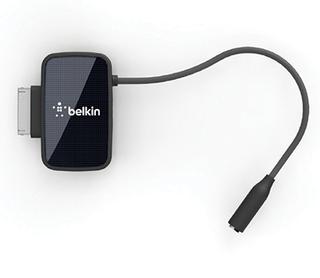Broadcasters Prepare for Mobile DTV Launch
Elgato eyeTVmobile WASHINGTON—As mobile DTV rolls out in about 50 markets during the next few months, the service will rely more heavily than originally envisioned on peripheral “dongles,” initially priced at more than $100 each, that enable smartphones and tablets to receive signals. During this fall’s soft-launch phase, MDTV providers are still making fundamental business-model decisions about future deployment.

Altogether about 90 U.S. stations are now transmitting MDTV signals, according to a Harris Corp. tally. Dyle TV signals now reach about 55 percent of the U.S. population.
The long-awaited debut of commercial Dyle TV and MyDTV will include several innovative approaches, such as a shared-channel service in Minnesota’s Twin Cities, where commercial and public TV stations will be available via the same transmission. Dyle TV is the service of the Mobile Content Venture (MCV), spearheaded by NBC and Fox plus a dozen other group station owners; “MyDTV” is the branding for the service of the Mobile 500 Alliance, also a consortium of multiple station groups. In only a few cities, such as Las Vegas, Minneapolis/St. Paul; and Charlotte and Raleigh, N.C., are signals from both MCV and Mobile 500 stations now available.
More details about upcoming MDTV plans may be revealed at a Sept. 2 promotional event at the Rayburn House Office Building on Capitol Hill organized by the Open Mobile Video Coalition.
“Right now it’s all about receivers,” said Jay Adrick, vice president, broadcast technology at the Harris Broadcast Communications Division. “We’ve got to get more receivers out there.”
Harris has supplied transmitter and related equipment to “the vast majority” (about 70 percent) of the TV stations transmitting mDTV signals, he said. The equipment costs about $75,000 to $125,000 per station, “depending on whether you’ve got an upgradeable exciter,” Adrick added.
Two companies are making the initial dongles: Elgato, a German-American firm specializing in video and TV peripherals for Apple products, and Belkin International, a Los Angeles-based maker of consumer electronics devices, will begin selling their versions of dongles during the coming month. Both companies—as well as MCV, M500 and MetroPCS officials—declined to speculate on the number of receivers that will be in the market this year.
Get the TV Tech Newsletter
The professional video industry's #1 source for news, trends and product and tech information. Sign up below.

Salil Dalvi, co-general manager of Dyle Mobile TV and senior vice president for Mobile Platform Development, NBCUniversal MetroPCS, the nation’s fifth largest wireless telephone provider, has begun selling the Samsung Galaxy S Lightray 4G handset with a preloaded Dyle TV app in 12 markets where TV stations are now transmitting Dyle-branded signals. The Samsung phone, with its built-in Dyle receiver and a telescoping antenna, costs $459 and is being promoted as an “Android smartphone [that] brings live TV to the palm of your hand.”
iOS AND ANDROID VERSIONS
Elgato displayed a DVB version of its “eyeTVmobile” dongle for Apple’s iOS platform at the IFA consumer electronics show in Berlin earlier this month. Adam Steinberg, the company’s marketing vice president, told TV Technology that Elgato is developing an Android version with Micro USB connector.
Steinberg was also cautious about launching the service in the crowded pre-holiday season. “I would have loved to happen earlier in the year …[but] we may be surprised.”
Belkin’s single MDTV receiver is called “Dyle Mobile TV” and will be aimed at iOS devices including iPhone, iPad and iPad Touch, according to a Belkin spokesperson. She acknowledged that “pricing and distribution are still being worked out since it is a slightly different kind of product,” and, like Elgato, Belkin expects most of the sales to be handled online, not through local electronics retailers.
Both dongle makers expect broadcasters’ on-air promotions of the Dyle service to be the major drive to encourage viewers to order products. The dongle implementations—each less than two-inches square with built-in power and antenna—will require viewers to download free apps into their wireless devices that will be used to tune into local TV stations transmitting the Dyle and MyDTV services.
Fisher Broadcasting and Hubbard Broadcasting, leaders of the Mobile 500, will soft launch MyDTV on Oct. 1 at their flagship stations in Seattle and Minneapolis/St. Paul respectively, according to John Lawson, executive director of the Mobile 500 Alliance. The companies are ordering 1,500 Elgato MyDTV dongles, most of which will be distributed for free, he said.

Belkin Dyle Mobile TV “The pace of deployment will pick up, but for now there’s a real focus on the Seattle and Twin Cities experience,” Lawson said.
Salil Dalvi, co-general manager of Dyle Mobile TV and senior vice president for Mobile Platform Development at NBCUniversal, agrees that many MDTV decisions will be made quickly. Dalvi told TV Technology that the Mobile Content Venture will offer the application and access to shows free “through the end of 2012.”
“We’ll take a look at the end of 2012 to see if we continue free of charge,” Dalvi said. Customers who buy dongles or smartphones will be advised that the service price may change in the future.
SIMULCASTING, ADVERTISING AND MORE STRATEGIES
Most of the current MDTV programming consists of simulcasts of standard broadcast line-ups. In many markets, the group owners have received approval from ABC and CBS to transmit those networks’ shows via Dyle TV and MyDTV, although those networks are not participating in the initiative.
For now most stations are concentrating on their primary TV broadcast line-up. One initial exception is in the Twin Cities, where Hubbard’s KSTP is a simulcast of the station’s feed of ABC network plus a simulcast of KTCA, Twin Cities Public TV.
“This is a where the public-private partnership that we’ve created is paying off,” said Lawson, a former public TV executive.
In markets such as Minneapolis/St. Paul, Atlanta and Washington, D.C., where ABC and/or CBS have authorized their affiliates to transmit network programming via MDTV on a trial basis, the networks “want to examine the response in order to formulate their own strategies,” Lawson said. He expects the networks and others “to develop their own mobile plans based on the Mobile 500 and Dyle experiences.”
Among the chief objectives of this fall’s pilot services is an evaluation of advertising opportunities. Dalvi points out that since “all use is measured,” local stations will be able to show mobile usage data to potential advertisers.
“We want to make sure that this is integrated as cleanly as possible into how a TV station is selling to advertisers,” Dalvi said. Although he declines to identify “who will provide the interface for measurement,” Lawson at Mobile 500 acknowledges that, “We have developed a research framework with Rentrak and Nielsen.”
“We want to not only measure the consumer reaction but also deploy the advertising components which are the heart of our revenue model,” Lawson said. “We think we can get a higher CPM for mobile because of its unique characteristics, especially the total accountability of viewership.”
Adrick of Harris said he believed the MDTV rollout would resemble the digital TV expansion of the last decade—but faster. He said out that new products “can handle encryption on the fly,” and Harris is working with Roundbox and other companies that will enable signaling, announcement and applications to accelerate MDTV capabilities.
“We’ve been through the early adopter phase like DTV and hi-def,” Adrick said. “We’re at the phase where we have to get receivers into the marketplace, and when they are there, we’ll have more interest and more stations will dive in.”
Gary Arlen, a contributor to Broadcasting & Cable, NextTV and TV Tech, is known for his visionary insights into the convergence of media + telecom + content + technology. His perspectives on public/tech policy, marketing and audience measurement have added to the value of his research and analyses of emerging interactive and broadband services. Gary was founder/editor/publisher of Interactivity Report, TeleServices Report and other influential newsletters; he was the long-time “curmudgeon” columnist for Multichannel News as well as a regular contributor to AdMap, Washington Technology and Telecommunications Reports; Gary writes regularly about trends and media/marketing for the Consumer Technology Association's i3 magazine plus several blogs.

